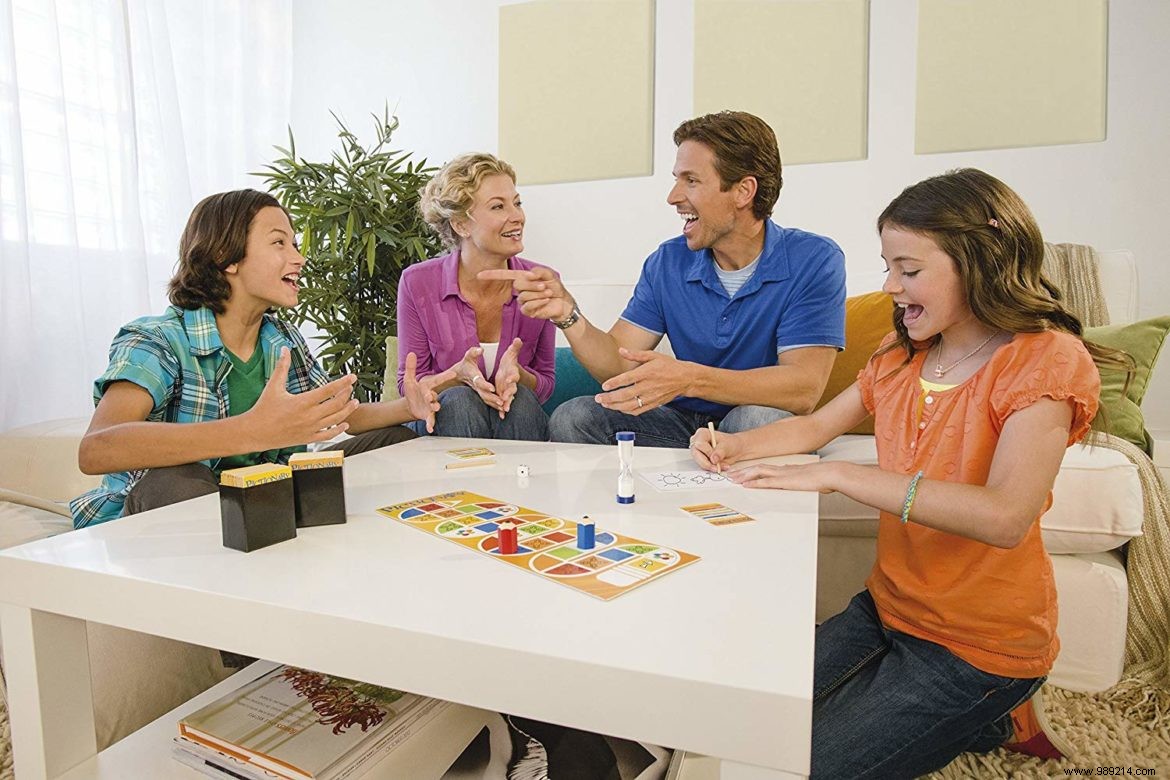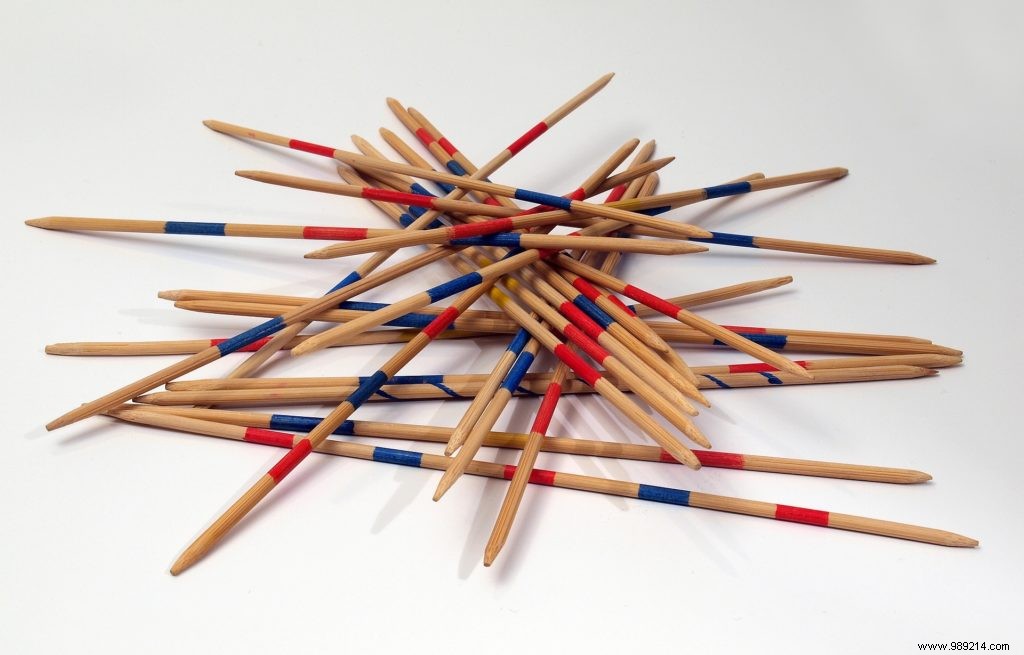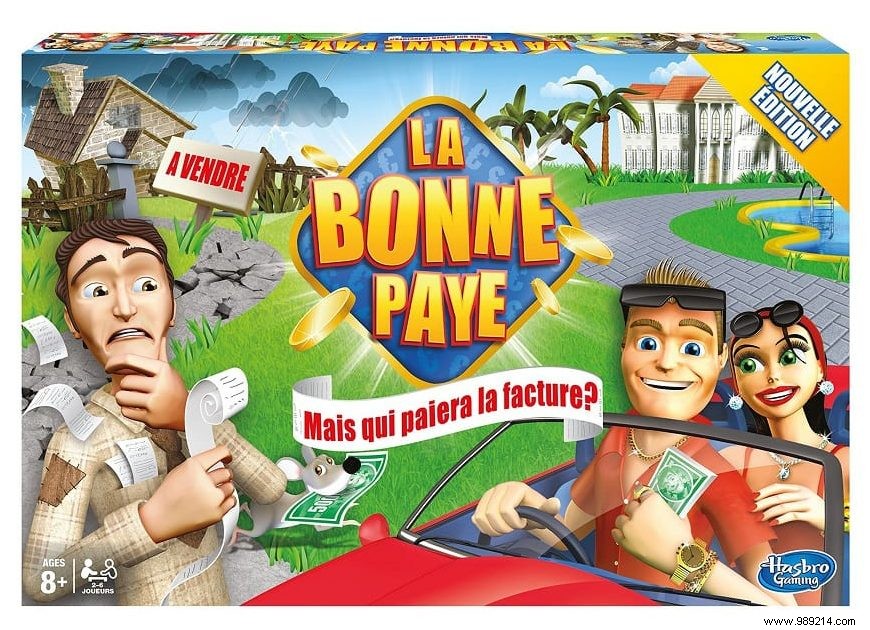
In an ultra-connected society, it is sometimes pleasant to leave aside, if only for a few hours, your screens to spend time with your family. If board games are above all a vector of social bond, in addition to being good entertainment, they also have benefits for brain function. In children, they stimulate the imagination, improve the ability to concentrate and help develop intellectual abilities. This activity for children is also an effective way to help them gain self-confidence, instill in them self-control, discipline, patience, but also the spirit of initiative. Discover 3 fun and instructive board games suitable for family afternoons.
Contents 1 The Mikado:for dexterity and self-control 2 La Bonne Paye:to learn the basics of economics 3 Trivial Pursuit:to perfect your general culture

Probably one of the most famous games of skill, the Mikado requires a combination of patience, strategic thinking and skill. The rules are quite simple, the games short (15-20 minutes) and can be played with 2 or more.
A box of Mikado includes 40 small wooden chopsticks with different colored streaks. Each kind of stick corresponds to a predefined number of points. Added to this is the “Mikado” wand which, in addition to being worth 20 points, can be used, depending on the variant, to catch other wands.
At the start of the game, a player holds all the sticks then gently releases them on a table so that they fall like a fan. If the release is missed, it is possible to start again until it is satisfactory. Then, in turn, it is up to the players to remove the chopsticks one by one, being careful not to touch the others. If a wand is hit, it's up to the next player to try their luck. Once all the chopsticks have been removed, the points are counted. Whoever totals the most is declared the winner.
Accessible from the middle section (about 4 years old), the Mikado is far from being limited to a game that only requires skill. If the best strategy seems at first sight to withdraw the most profitable chopsticks, that is to say those which offer the most points, children and parents quickly understand that it is sometimes better to secure his victory, by choosing chopsticks easier to remove even if they earn fewer points! Also, let's not forget, in the Mikado, there is a good deal of chance.
It is to the publisher Parker that we owe most of the best-selling board games such as Monopoly, Risk, Cluedo but also La Bonne Paye which remains a must for family friendly moments devoted to board games. . With its dynamism, both playful and instructive, La Bonne Paye is an excellent way to introduce children to budget management. The rules are as follows:after having defined the duration of the game, knowing that a complete turn of the board corresponds to one month, each player receives a pawn, a savings account and a wad of banknotes. Then, each in turn, the players roll a die and move their pawn on the board according to the result of the die. Depending on the destination square, the player is required to draw a card, pay taxes, make an investment, a sale, a loan, etc. The winner is the one who, at the end of the game, has the most money.  If chance remains omnipresent due to the need to roll a dice each turn, victory is also a question of strategy since risk-taking is a double-edged sword. Depending on the number of cycles defined at the start of the game, La Bonne Paye announces a game duration of approximately one hour. It is possible to play it from two players, even the mechanics are more present from 4. An excellent board game to play from 8 years old.
If chance remains omnipresent due to the need to roll a dice each turn, victory is also a question of strategy since risk-taking is a double-edged sword. Depending on the number of cycles defined at the start of the game, La Bonne Paye announces a game duration of approximately one hour. It is possible to play it from two players, even the mechanics are more present from 4. An excellent board game to play from 8 years old.
In addition to cognitive faculties, a good general culture in children is also an asset for their intellectual development and personal fulfillment. To help him assimilate new knowledge more easily while practicing a family activity, the Trivial Pursuit is an excellent tool. At the start of the game, each player receives an empty pie chart box which they must fill with 6 triangles of different colors, each corresponding to a different theme:history, sports, science, arts and literature, etc. Each turn, the player rolls the die and chooses to move their pie one way or another in an attempt to win a new piece. Once the camembert is complete, all you have to do is return to the central square of the board to ensure your victory. As a general rule, the Trivial Pursuit is suitable for children aged 10 and over. However, the “junior” version may be suitable for the youngest.

If the Trivial Pursuit was not born yesterday since the first edition dates from 1979, it has nevertheless always been in tune with the times and has been able to renew itself. Each year new refills of questions are published as well as new versions of the board. Available in several different editions, the Trivial Pursuit even includes thematic question-and-answer games about Harry Potter, Disney films, Star Wars and also more specialized subjects such as wines, coffee or even gastronomy. As it is possible in most editions to differentiate a set of questions for adults and the other for children, the Trivial Pursuit remains to this day one of the only board games where in the same part the difficulty remains suitable for all .